

I first went to Beirut in 2008. I'd met a Cuban-Lebanese medical student in Havana in 2006, and she'd told me I would love Lebanon. My dad has a few faded Agfa slides shot in Lebanon in the early 1970s, and faded stories about hitching back through Syria after his medical student months at the American University of Beirut, and I linked Joana's suggestion with the story of his memory and thought I should go. My dear friend Elena was working in Beirut, and I stayed in that January reading Fisk's Pity the Nation, saved for a ticket, and flew via Cyprus in April 2008 for 3 weeks. That's when I first blogged, and wrote about the journey, the city, and my shifting perspectives on both. It was a trip that set the path of my life, in ways I couldn't have foreseen. Not least, it led to Syria, and then moving to Damascus; indirectly, it led to meeting and marrying my wife, having 2 beautiful children, and being wedded to a country, people and language that are newly my own, in one way or another. I mix English, French and Arabic when speaking to my daughter, in descending order of competency and fluency, and our minds will always be part elsewhere.
I started photographing Beirut in 2008, but since 2015, I've made thousands of mostly digital images of our life there, as my original outsider's priorities and perspectives have shifted closer to those of someone who's come to have a new family home. I'm not sure how this editing process will, or can be resolved, but starting to write this is a first step. I'm adding images incrementally, and it'll spill to other 'projects' no doubt, and the work will continue to be made, to expand, with time, proximity and distance.
Two months after the political stand-off of April 2008, the downtown area of Beirut is open. The area has since been redeveloped and built upon. The current economic and political crisis has rendered its expensive cafes and exclusive designer stores even less appropriate to the memory of the pre-war city centre than they were when implanted by Solidaire.
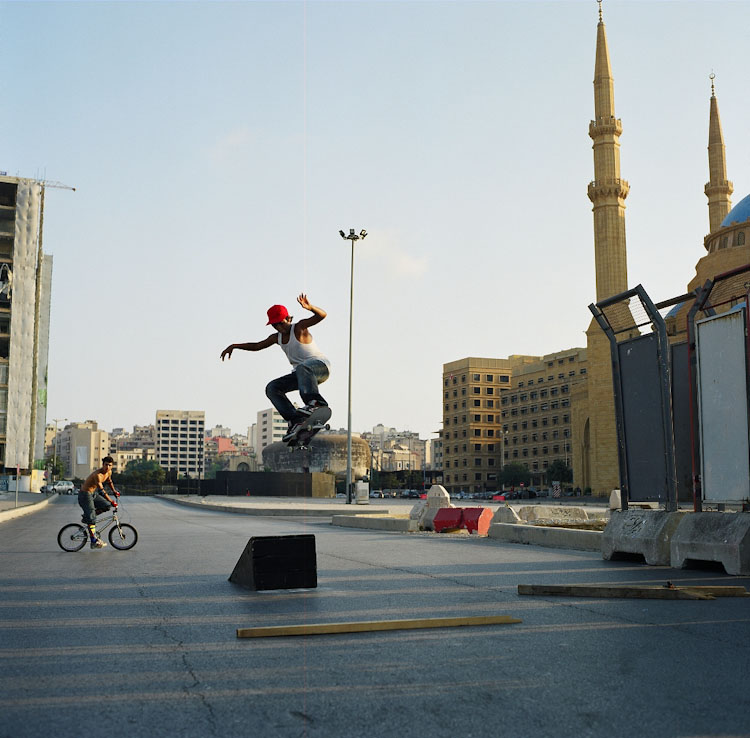 Show caption
Show caption
Two months after the political stand-off of April 2008, the downtown area of Beirut is open. The area has since been redeveloped and built upon. The current economic and political crisis has rendered its expensive cafes and exclusive designer stores even less appropriate to the memory of the pre-war city centre than they were when implanted by Solidaire.
Skater, Downtown.
Beirut, July 2008.
At the fun fair at Raouche, the end of the Corniche. The figure head's musculature seemed Soviet-heroic to me, but she's covered, and looks away. When I was looking, feeling and writing then, my eyes were soft for clues, and taken with the new. These are clean images, and I don't look like that now.
 Show caption
Show caption
At the fun fair at Raouche, the end of the Corniche. The figure head's musculature seemed Soviet-heroic to me, but she's covered, and looks away. When I was looking, feeling and writing then, my eyes were soft for clues, and taken with the new. These are clean images, and I don't look like that now.
Waltzer
Beirut, April 2008
I tried to find this old, three storied building a year or two ago, walking for an hour or so around Sassine Square in Ashrafieh, where I'd first explored the city alone. It was already dwarfed by the taller, newer blocks around it, cramped into a shaded and neglected garden; now it's been razed. There was now a carpark whose attendant remembered the building; I couldn't feel its ghost at all, with the heat rising from the fresh tarmac. The snack bar on the corner below still sold the spicy fish and chip sandwiches though.
 Show caption
Show caption
I tried to find this old, three storied building a year or two ago, walking for an hour or so around Sassine Square in Ashrafieh, where I'd first explored the city alone. It was already dwarfed by the taller, newer blocks around it, cramped into a shaded and neglected garden; now it's been razed. There was now a carpark whose attendant remembered the building; I couldn't feel its ghost at all, with the heat rising from the fresh tarmac. The snack bar on the corner below still sold the spicy fish and chip sandwiches though.
Elena's flat
Mar Mitr, Beirut, April 2008
New money poured in to fill these voids with real estate of speculative value.
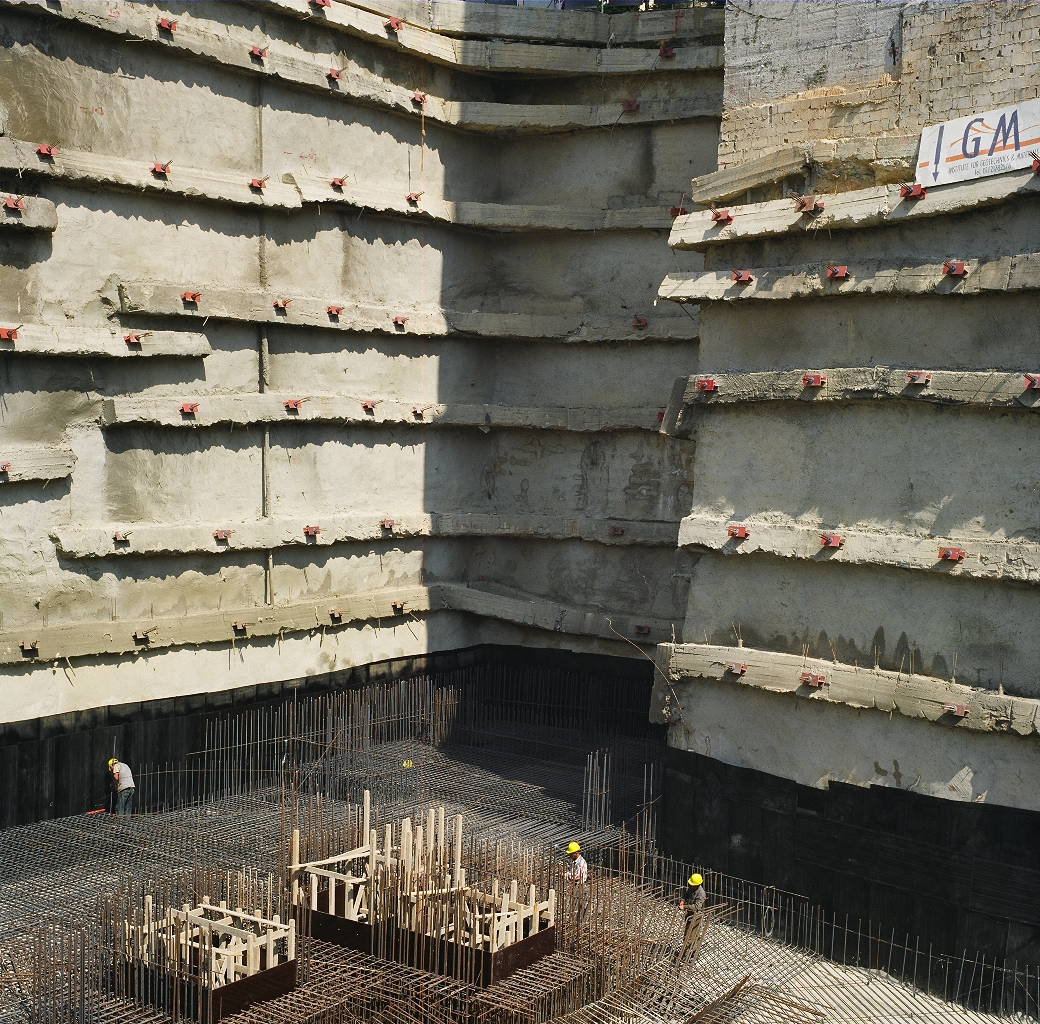 Show caption
Show caption
New money poured in to fill these voids with real estate of speculative value.
Foundation
Beirut 2008
It's a cliche to point out the way the city holds many intersecting and overlaying cultures and communities, in a way that is no longer common in the Arab world.
 Show caption
Show caption
It's a cliche to point out the way the city holds many intersecting and overlaying cultures and communities, in a way that is no longer common in the Arab world.
Bus station
Beirut July 2008
I try to find this building, but we're always driving from a different direction. It's usually me driving, and back then I'd get a service from near the Museum, so it was easier to pay attention, not having to be so alert to the road.
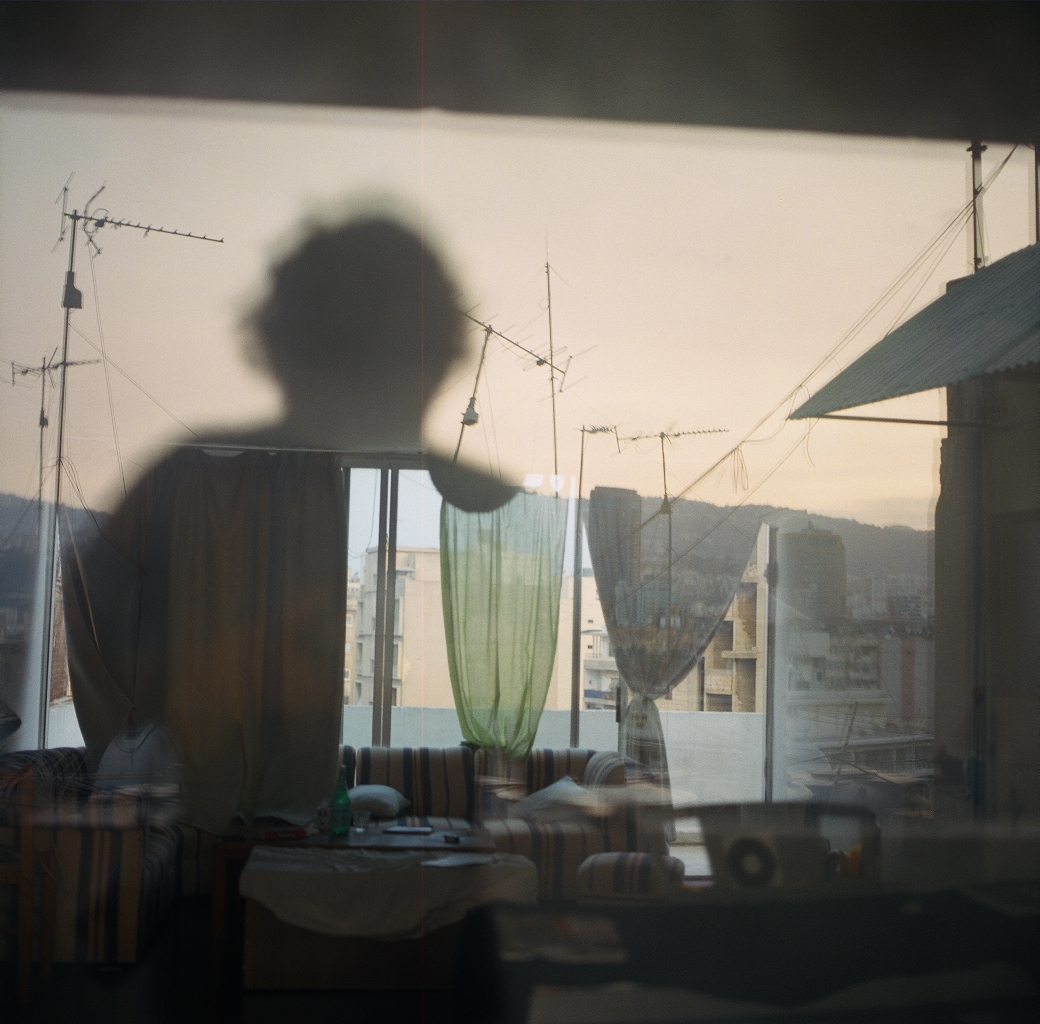 Show caption
Show caption
I try to find this building, but we're always driving from a different direction. It's usually me driving, and back then I'd get a service from near the Museum, so it was easier to pay attention, not having to be so alert to the road.
Furn al Chebbak
Beirut, July 2008
I remarked on, and documented, some of the many public faces looking silently over the city then. We're used to simulacra of people, adverts, actors, models, in the UK, and these faces, martyred, mourned, reminders of voting expectation, or a combination of all three, were mysterious, a script I could not make out.
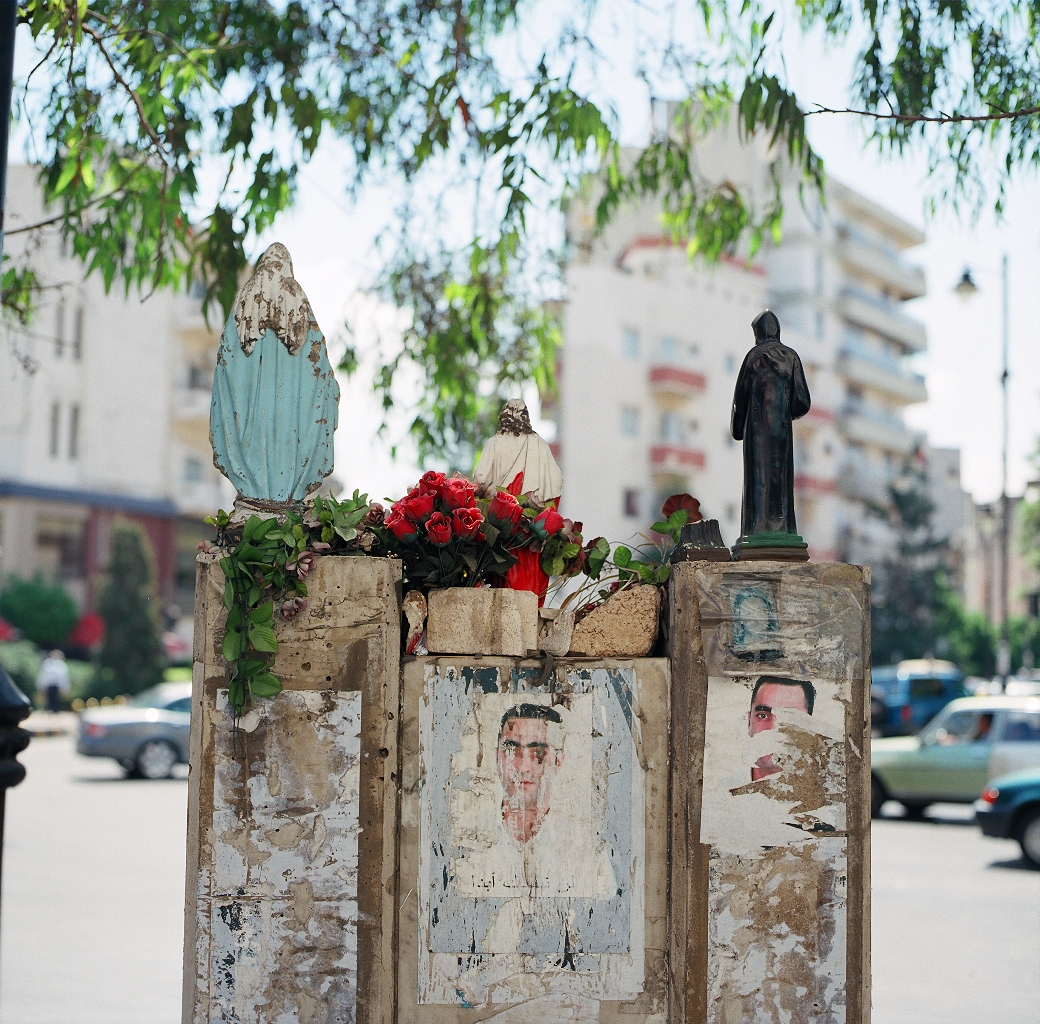 Show caption
Show caption
I remarked on, and documented, some of the many public faces looking silently over the city then. We're used to simulacra of people, adverts, actors, models, in the UK, and these faces, martyred, mourned, reminders of voting expectation, or a combination of all three, were mysterious, a script I could not make out.
Sassine Square
Beirut, April 2008
Religious iconography marks territory.
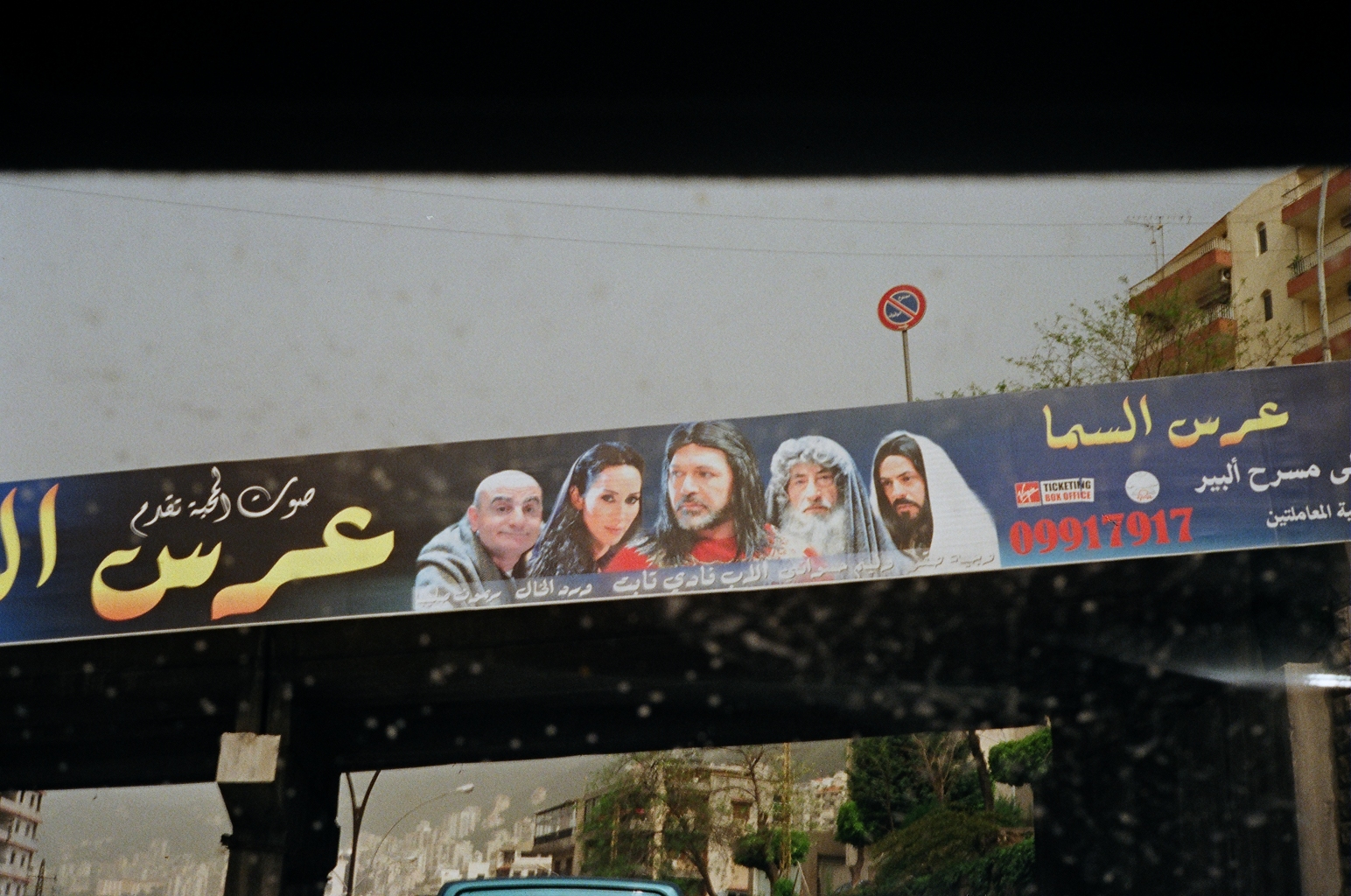 Show caption
Show caption
Religious iconography marks territory.
Highway
Lebanon, April 2008







